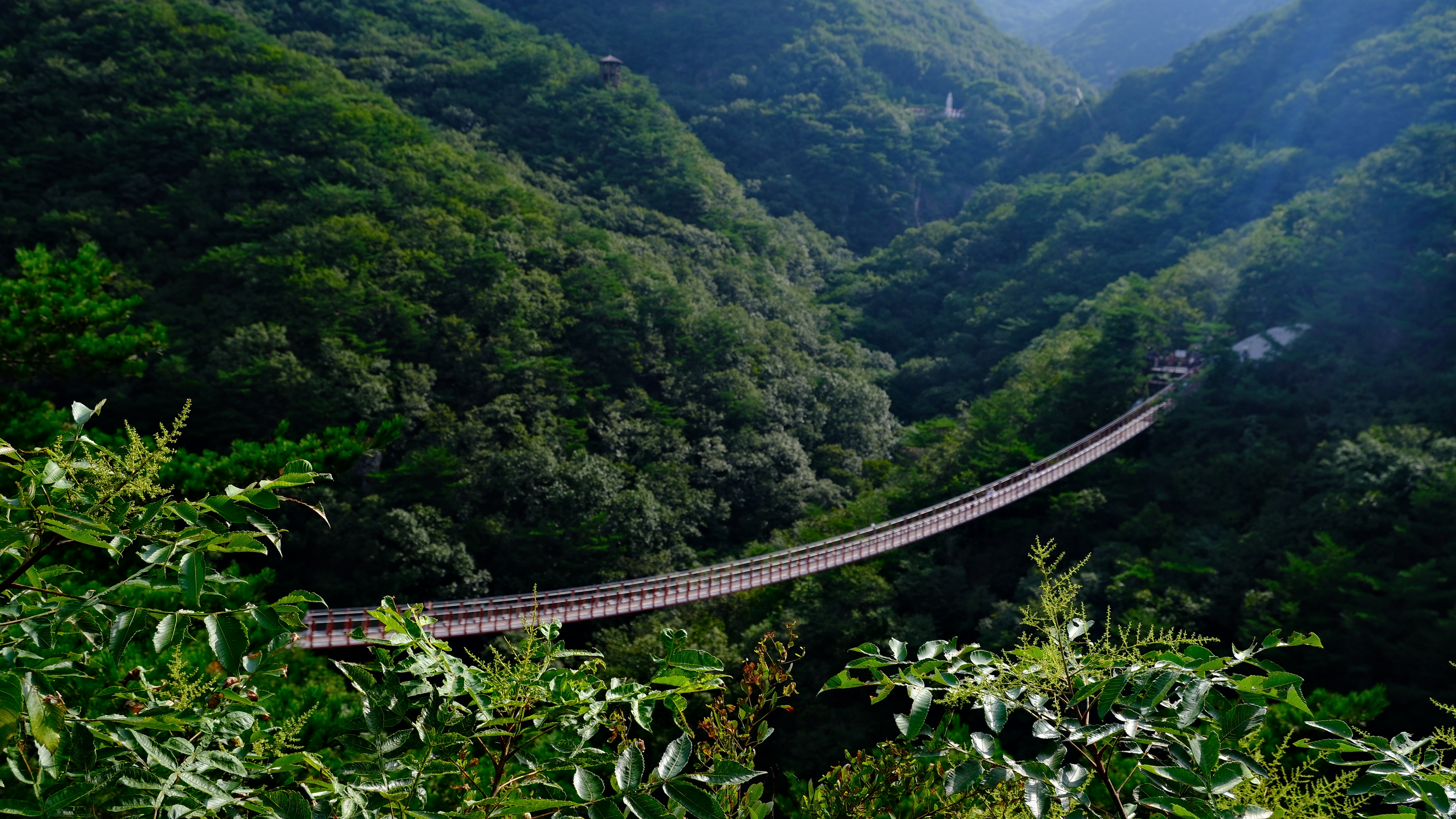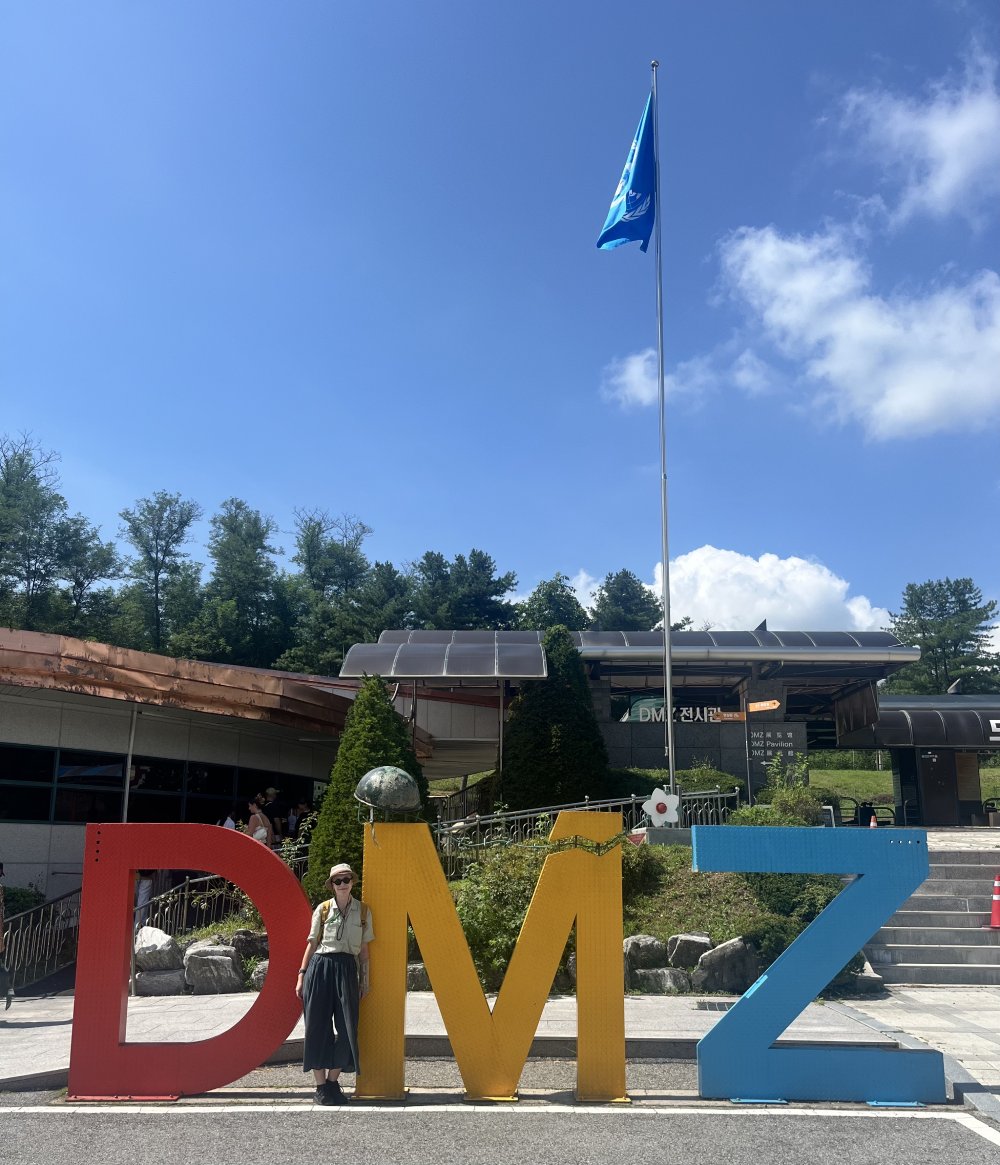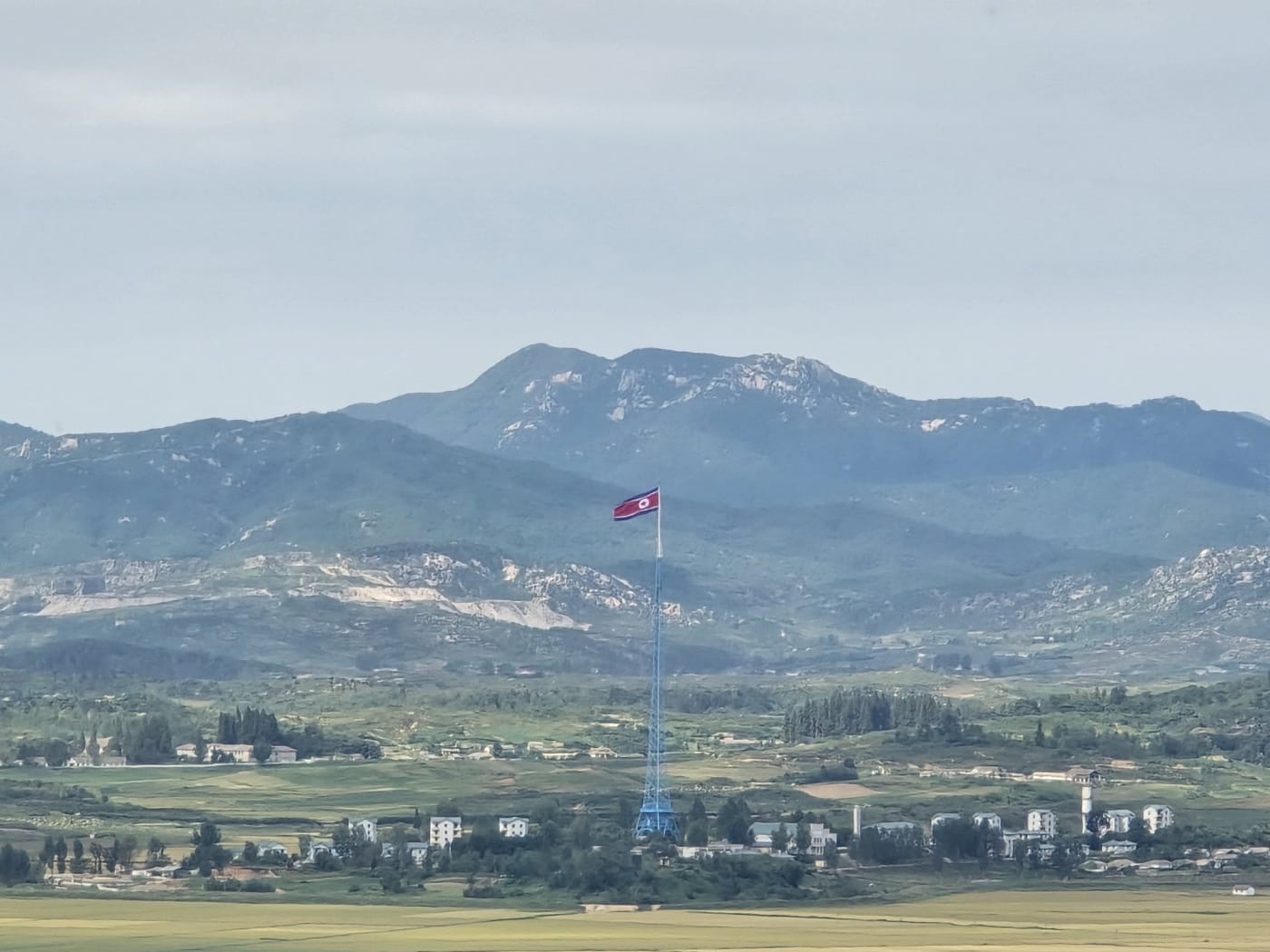Enjoy 5 min read Fresh! August 22, 2025 at 8:54pm
DMZ stands for Demilitarized Zone. It's a strip of land running across the Korean Peninsula near the 38th parallel north, splitting it almost in half. The zone's role is to limit physical and visual contact between both Koreas, preventing incidents and provocations. Despite its name, this narrow (4km wide) zone contains the most militarized space in the modern world, housing armies and state-of-the-art weapons, including nuclear, biological, and chemical ones.
Since it's a sensitive and military-heavy place, going there without an official guide is impossible. Photography is strictly prohibited in many places, with penalties for documenting North Korea reaching 3 years in prison.
The Tour
I booked my tour on Klook. On a (way too hot) Friday morning, 7a.m., we all met in the city and embarked in a bus. The reason to go so early is because the tickets to DMZ are sold on a first come first served basis, and I was told that only 40 buses daily are allowed inside.
Before entering the zone, on about a 40-minute drive from Seoul, our lovely guide provided us with a background of Korea's history, the Korean War, the Japanese invasion and occupation, the refugees from North Korea, and the Zone itself. She also presented us with a peculiar souvenir to buy—North Korean money. Yes, I got myself one of the cheapest bill for 10,000KRW (around 7USD).
First, we visited the Gamaksan suspension bridge.
The closer to the DMZ, the more farmlans and greenery could be observed, as not many people like the idea of living so close to the border. Although the area around the bridge was not as preserved as DMZ itself, it was still a great place for hikers and nature enthusiast.

Next, we made a brief stop for our guide to buy tickets. It was on a plaza called Imjingak, with an amusement park as well as many monuments, such as sculpture commemorating comfort women (some still alive and waiting for Japan's proper apologies and compensation...), American soldiers that lost their lives in a Korean War, a rusted train that was used to transport ammunition and a Freedom Bridge, a bridge that was used to exchange the prisoners of War in 1953.
Until then, we were exploring areas close to the DMZ, not the Zone itself.
But the time has come.
Entering the Zone
Our bus crossed the river ("It looks quiet, no mines and no dead bodies today!"—the guide was weirdly happy saying that) and proceeded to the Zone. One soldier boarded our bus and investigated everyone's passports. Outside, we could see multiple military cars with young soldiers inside. The military service is mandatory for South Korean men aged 18-30 and lasts 18 months, the service for women is voluntary. In comparison, North Koreans have compulsory military service for both men (10 years), and women (7 years).
Once documents were checked and we entered the zone, the signs warning us about mines seemed to be everywhere. It turns out that the Demilitarized Zone contains the world's largest minefield.
We arrived at the 3rd infiltration tunnel, an incomplete tunnel dug by the North Koreans in preparation for the Seoul invasion. Located 73m underground, it was discovered after receiving intel from a North Korean refugee who was an engineer working in that facility. It is now filled with three concrete barricades. After getting down on a long 11-degree slope (coming back was a bit of a workout...) and navigating a tight tunnel, one can reach a third barricade and peek onto a second barricade through a small window.
The photography inside the tunnel was forbidden, but there was a convenient place to take a picture outside.

Observing North Korea
Finally, the Dora observatory, which I consider the highlight of my DMZ visit.
On the 3rd floor of the building, with a row of binoculars facing North Korea, everyone was free to take a closer look at the mountains, buildings, both Korea's flags, the "propaganda village" in which no one lives, the river guarded with an electrified barb... and yes, North Korean people as well. Well, at least I spotted one, walking on a street, just like that.
Though a bit far, seeing actual people living there felt almost surreal.
So close, yet so far. Our guide said that out of around 1000 people attempting escape last year (mostly through the China border which is less guarded), only 67 made it to South Korea last year. The rest either moved to another country, were trafficked, or found dead. Whenever North Korean refugees make it to South Korea, they are given a place, education, and South Korean documents.

View from the Observatory to South Korea
The photography of North Korea's side was forbidden, but afterwards, our guide provided us with pictures taken years ago, before the restrictions were this strict.

View from the Observatory to North Korea, provided by a guide
The end...?
Lastly, we stopped for a Korean buffet lunch (14,000KRW, around 10USD) in an Unification Village—a tiny town within the Zone, with most of its 400-or-so residents being elderly people who either used to live on this territory or were displaced during the War. Various souvenirs were available in the nearby shop, including cosmetics and food grown in the DMZ. Farming is the primary economic activity of the village—all the crops, particularly rice, being cultivated on a fertile soil far from pollution, are of top quality.
On the way back, another soldier checked our passports again as we exited the DMZ. The whole experience lasted around 7 hours.
It was the end of the tour, and I was left with a mix of emotions. Grateful for the opportunity to see this place and learn more about Korea, baffled by some parts of the tour being commercialized, heartbroken for the people who were forced to leave their homes and families, still living with uncertainity if they ever meet again.
If the future allows it, I'd love to visit North Korea. Until today, I've been debating whenever a trip like that would be ethical or not (that's a topic for another post!), but I think I've made up my mind after vsiting DMZ and especially after hearing my guide's enthusiasm when she voiced her desire to go there herself.
